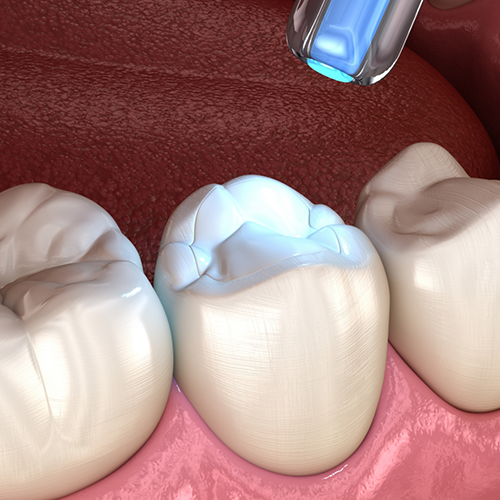Tooth-Colored Fillings Canton
Save Your Tooth from Decay
Cavities are among the most common health problems in the world, and anyone with natural teeth can get them. If the decay isn’t treated quickly, you might suffer from severe toothache, infection, or even tooth loss. Dr. Robison can save your pearly whites by removing the decayed area and filling the cavity with safe, biocompatible tooth-colored material. That way, you protect your tooth from further damage while still maintaining a natural-looking smile! If you’re suffering from a toothache and suspect a cavity is the culprit, please contact our team today for assistance.
Why Choose Robison Dental Group for Tooth-Colored Fillings?
- Patients of All Ages Are Welcome
- Skilled Dentist with Years of Experience
- Safe, Natural-Looking Materials Used
What Can Cause Cavities?

If you eat a lot of sugars and starches, they can become stuck to your teeth; if they aren’t cleaned off, bacteria will eat them and produce acids as a result. Over time, the acids will eat through the enamel, permanently destroying it and forming cavities.
If a cavity isn’t treated, the bacteria will reach the dentin layer, which is softer than the enamel and is less resistant to the acid. Not long afterward, the pulp of the tooth can become infected, causing pain and swelling. The ultimate result can be losing the tooth altogether.
How Tooth-Colored Fillings Work

Dr. Robison can remove decay from your tooth, but that leaves an empty space behind. If it isn’t filled, your tooth will be weakened and more prone to physical damage. By applying fillings to the cavity, we can reverse the damage that’s been done, bringing the tooth back to its full strength and structural integrity; you won’t need to worry about it chipping, cracking, or breaking inward due to the trauma. Furthermore, the filling material will stop bacteria from re-entering the open area and causing further decay; in other words, your current problems are solved, and future ones are averted!
Tooth-Colored Fillings VS Metallic Fillings

Some fillings use gold or other metals to fill the empty space. In some cases, an amalgam made of mercury, silver, tin, and copper is used (with mercury taking up half the compound and serving to bind the other metals together). This method has been employed by dentists for a long time, but it has a rather obvious disadvantage: metallic fillings are very noticeable, which can make many patients feel self-conscious about smiling or laughing.
By contrast, tooth-colored fillings use a composite resin consisting of ceramic and plastic that’s hardened by a special light. This material mimics the appearance of teeth and can be customized to look natural in your mouth. Many people won’t be able to tell that you’ve had dental work done!
Tooth-colored fillings can have other benefits as well. They can adhere to the tooth quite well, making them relatively easy to apply. Furthermore, the resin is very flexible, so in many cases, it will require much less drilling than a metallic filling. That means more of the tooth’s natural structure will be preserved, and both it and the filling will be stronger as a result.
I Need a Checkup & Cleaning I am Worried About Gum Disease I am Looking for a Dentist for My Child I Have a Cavity or Broken Tooth I am Missing One or More Teeth I Want to Enhance My Smile I Want a Straighter Smile I am Scared of the Dentist I Have Jaw Pain I Have a Dental Emergency View Our Services

